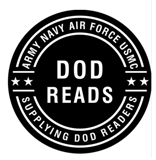Every day, iconic brands like J.C. Penny, Sears, Kodak, and Blockbuster vanish. Jeff Bezos himself predicts that Amazon will eventually go bankrupt.1 While once exemplary lawful firms fail, El Chapo Guzmán, convicted head of the Sinaloa Cartel, and his wife launch their high-profile “El Chapo 701” fashion clothing line. Managers in lawful companies face disruptive technologies, groundbreaking new products, and competition from entrants that challenge their survival. Every organization must manage its way through a rapidly changing environment. Yet some organized crime syndicates endure decades despite massive law enforcement efforts and rival gangs dedicated to their daily demise.
Using rigorous economic analysis, we analyze how these criminal organizations survive, and even thrive, whereas legal companies that play by the rules falter and often fail.
RELENTLESS METHODOLOGY
Relentless offers the first economics-based forensic investigation of the corporate governance practices that contribute to the persistence and success of organized crime. We draw on seventy-five years of Nobel-prize-winning economics research that teaches what all organizations, both lawful and unlawful, must do to survive.2 They must have leaders who think carefully about how to align the organization’s business strategy and employee empowerment, incentives, and corporate culture. This means addressing the following questions:
- Do we have the right strategy?
- To execute our current business strategy, are the right people empowered to make the key decisions?
- Do these people have the proper incentives to make these decisions?
- Does the corporate culture support the strategy and incentives?
All organizations must have four, economics-based, coordinated administrative systems that (1) delegate specific tasks to individuals or teams (empowerment), (2) measure the performance of those assigned the tasks, (3) reward/punish these individuals, and (4) create a corporate culture that supports the strategy. We refer to these four key systems as an organization’s Four Pillars. Every building serves a unique purpose. A factory, a skyscraper, a hotel, and a home requires underlying pillars to support the edifice. Structural engineers design the pillars based on the unique characteristics of the building. So too do law-abiding leaders. They develop unique strategies that encapsulate their organization’s core competencies and market opportunities. Given their one-of-a-kind strategy, they must construct Four Pillars to execute the strategy.
Relentless’ forensics uncovers the Four Pillars deployed by four criminal organizations: the American Mafia (dating back to the 1920s), the Sinaloa Cartel (dating back to the 1920s), the Hells Angels (founded in the 1950s), and the Crips and the Bloods (founded in the 1960s). Collectively, we have eighty years of research and interactions analyzing the Four Pillars of hundreds of lawful companies. We utilize the same methodology to reveal the Four Pillars of mobsters using their personal biographies, numerous organized crime books, academic studies of crime syndicates, media stories, and personal interviews with prosecutors and criminal defense attorneys.
Our economic biopsy of the four crime syndicates finds that mobsters’ Four Pillars, while unique in many ways, have produced durable organizations. Surprisingly, all four syndicates attracted the right people—those committed to their principles and practices—to create resourceful, market-obsessed, and relentless, high-performance teams. These teams built strong and lasting brands and formed persistent corporate cultures with unique norms, values, and behaviors.
Leaders in all environments must develop distinctive corporate strategies and then choose the level of empowerment, incentives, and corporate culture to achieve their missions.
Why Mobsters?
Although lawful and unlawful businesses differ in important ways, both must carefully design Four Pillars matched to their strategies. Criminals deploy far more than violence to achieve their ends. Successful crime leaders must think carefully about aligning their strategies with best practices. They devise elaborate written codes of conduct that delineate and enforce acceptable and unacceptable behaviors. They establish intricate initiation rituals to instill desirable, if immoral, values and cull unwanted members. Others devise well-defined succession plans to ensure continued leadership if bosses are killed or imprisoned. Many display unrelenting resourcefulness in finding new, lucrative illicit rackets.
Our forensic study of surviving criminal organizations offers vivid examples of the importance of aligning strategy and the Four Pillars. Getting this alignment right often means the difference among success, failure, and survival. The four organized crime syndicates represent gripping examples of how mobsters create cultures that take a long-term view, thereby promoting the syndicate’s survival. We seek to make two essential points for lawful managers. First, an organization’s Four Pillars drive its success and survivability. Second, lawful managers must design the Four Pillars that uniquely and jointly execute their strategy. Although criminals and lawful managers deploy very different sets of Four Pillars, both must follow the same economic principles in designing them. Relentless expounds these general economic principles in the context of mobsters.
My Collaboration with Jerry Zimmerman on "Relentless"
Our collaboration began in the fall of 1997 when Daniel Forrester entered the MBA program at the University of Rochester’s Simon School of Business where took courses from Jerold Zimmerman. Upon graduation, Daniel went on to a successful consulting career specializing in corporate culture and founding THRUUE, Inc. Decades later, Forrester reached out to Zimmerman for some expert feedback on a challenging consulting case. Zimmerman helped Daniel reformulate the problem from multiple dimensions. At the end of the call, Zimmerman mentioned a manuscript that he was working on that explored a unique set of atypical organizations that would outlast Goldman Sachs and Google. Forrester was immediately interested. Aft er reading early chapters of what became Relentless, the two went back and forth on emails and phone calls for the better part of a year. Much of the book's content on culture is the direct result of Daniel's expertise and practical experience in helping clients understand and improve their corporate culture.
In war, the better led, more effectively run team wins, regardless of moral right or wrong. In Relentless, we get a fascinating window into the murky world of organized crime – from the Mafia to Drug Cartels – and find that the same hold true. As mundane as it sounds, the frightening bosses who orchestrate the wrongdoing that simultaneously terrifies and mesmerizes us are, in the end, talented leaders and managers. There’s much we can learn from them.
- General Stanley McChrystal
Former commander of US and International Security Assistance Forces Afghanistan and the former commander of Joint Special Operations Command
This intriguing and thoughtful book illustrates the power of sound economic thinking in understanding organizations. It takes the concepts that help us understand successful business enterprises and shows that the same concepts are at work in successful criminal enterprises. In doing so it validates the power of the underlying economic concepts while offering a fascinating window into some of the most long-lived criminal organizations.
- Charles Plosser
Former President of the Federal Reserve Bank of Philidelphia
Drawing on insights from perhaps the most unlikely of sources–organized crime–Jerold Zimmerman, the co-architect of organizational architecture theory, and Daniel Forrester, Founder of THRUUE Inc, provide unique insights of how effective leaders rely on both incentives and values/culture to build successful organizations. Because mobs must overcome so many challenges in order to succeed, Relentless provides especially compelling illumination of the Zimmerman-Forrester valuable leadership model.
- Mark Zupan
President, Alfred University




.png)